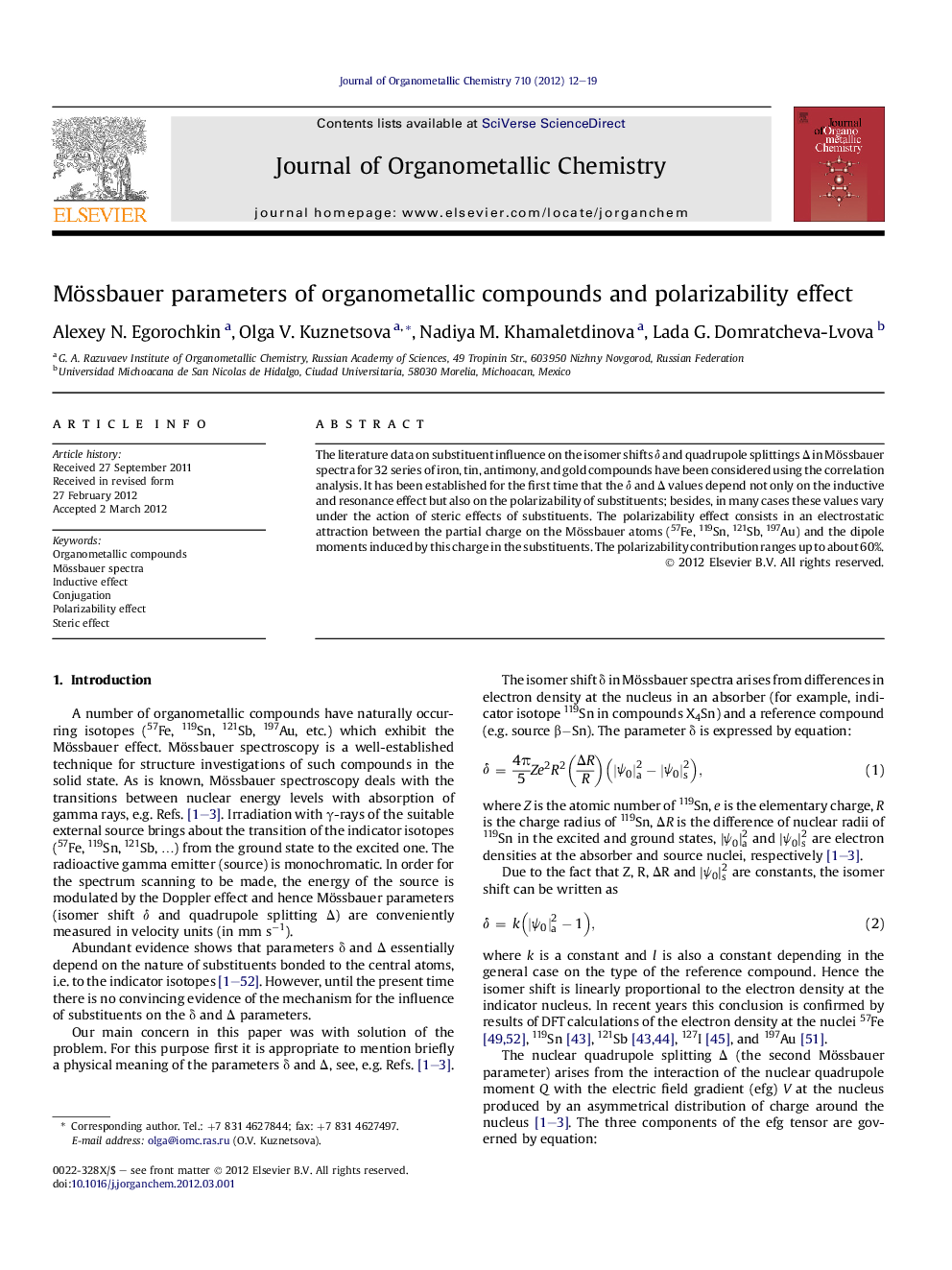| Article ID | Journal | Published Year | Pages | File Type |
|---|---|---|---|---|
| 1326173 | Journal of Organometallic Chemistry | 2012 | 8 Pages |
The literature data on substituent influence on the isomer shifts δ and quadrupole splittings Δ in Mössbauer spectra for 32 series of iron, tin, antimony, and gold compounds have been considered using the correlation analysis. It has been established for the first time that the δ and Δ values depend not only on the inductive and resonance effect but also on the polarizability of substituents; besides, in many cases these values vary under the action of steric effects of substituents. The polarizability effect consists in an electrostatic attraction between the partial charge on the Mössbauer atoms (57Fe, 119Sn, 121Sb, 197Au) and the dipole moments induced by this charge in the substituents. The polarizability contribution ranges up to about 60%.
Graphical abstractThe isomer shifts δ and quadrupole splittings Δ in Mössbauer spectra for 32 series of iron, tin, antimony, and gold compounds depend on joint influence of the inductive, resonance, and polarizability effects of X substituents.Figure optionsDownload full-size imageDownload as PowerPoint slideHighlights► Mössbauer spectra for 32 series of iron, tin, antimony, and gold compounds. ► Isomer shifts δ(57Fe, 119Sn, 121Sb, 197Au) and quadrupole splittings Δ(57Fe, 119Sn, 121Sb, 197Au). ► The influence of the inductive, resonance, polarizability, and steric effects of substituents.
